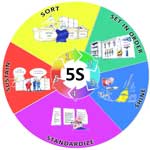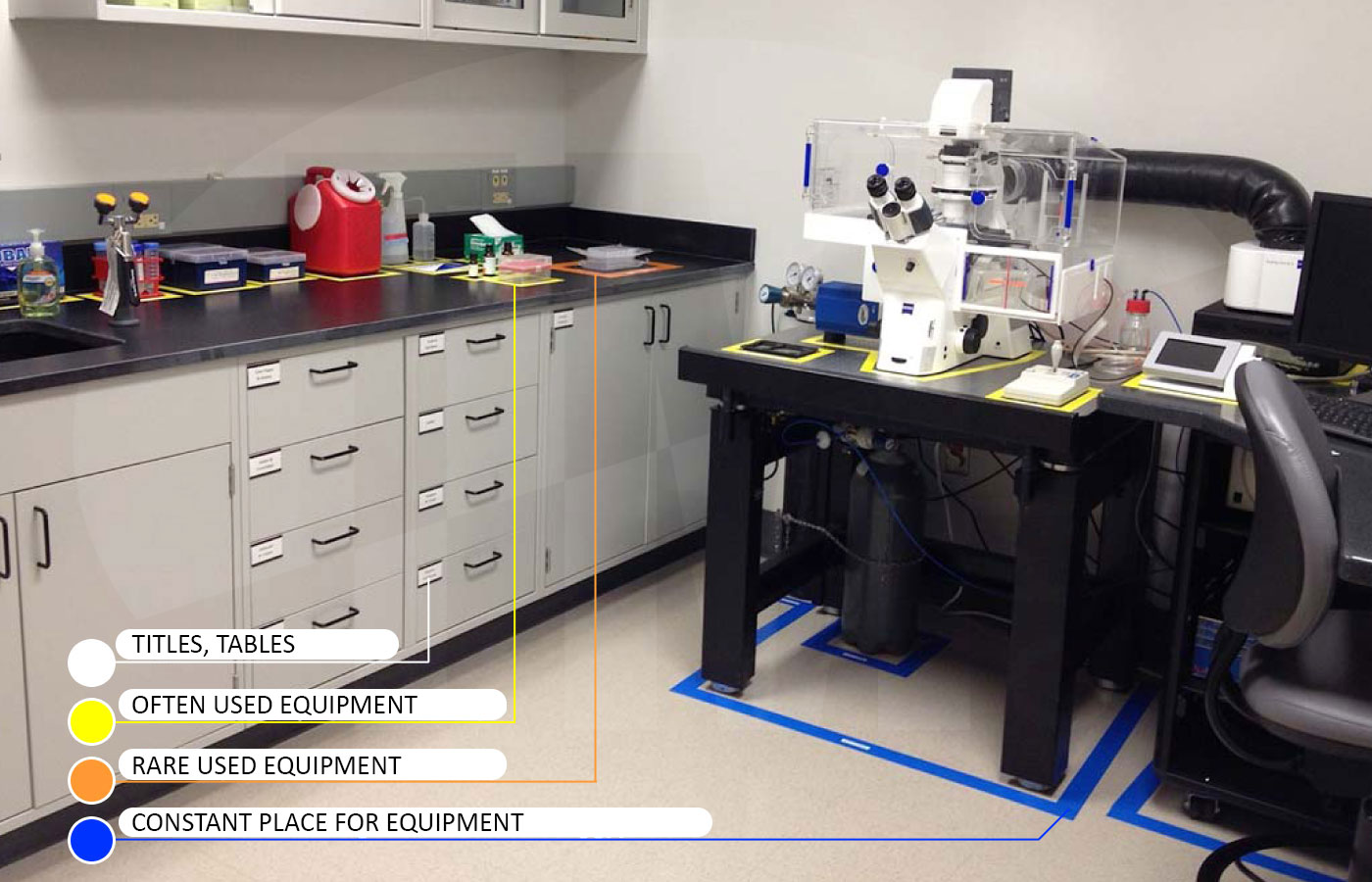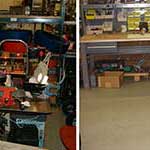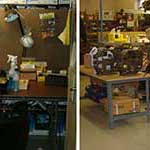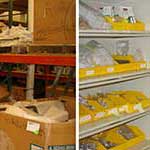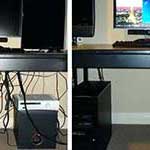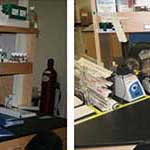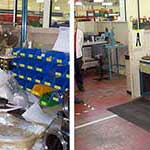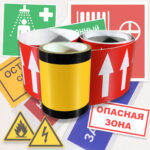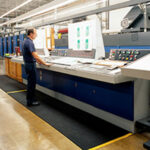5S System (short for “5 Steps” – five steps) is a tool for providing a system lean manufacturing, streamlining the workplace with marking. This is not “cleaning standardization” but a philosophy of lean, successful, lean manufacturing. The system was developed in post-war Japan by Toyota.
5S Goals
• creating a comfortable psychological climate, stimulating the desire to work;
• increase in labor productivity;
• reduction in the number of accidents;
• increasing the level of product quality, reducing the number of defects.
What is 5S
5S are five Japanese words that describe a cycle of five steps. The activities underlying 5S (sorting, rational arrangement, cleaning, standardization and improvement) are absolutely logical. They are the basic rules for managing any productive department. However, it is the systematic approach that the 5S system applies to these activities that makes it unique.
Step 1. Sort
Sorting (seiri) – a clear division of things into necessary and unnecessary and getting rid of the latter. It means that you free up your workplace from everything that is not needed when performing current production operations.
Workers and managers are often not in the habit of disposing of items that are no longer needed for work, keeping them nearby “just in case of a fire”. This usually results in unacceptable clutter or obstruction in the work area. Removing unnecessary items and putting things in order in the workplace improves work culture and safety. To more clearly demonstrate how much excess has accumulated in the workplace, you can hang a red label (flag) on each candidate item for removal from the work area.
All employees are involved in sorting and identifying items that:
• must be immediately removed, thrown away, disposed of;
• should be moved to a more suitable storage location;
• must be left and their places must be created and marked.
The “red tag zone” of items with red flags must be clearly defined and monitored carefully. Items that remain intact for more than 30 days will be recycled, sold or disposed of.
Step 2. Set In Order
Order keeping (seiton) – neatness, organizing the storage of necessary things, which makes it quick and easy to find and use them. It means to define and designate a “home” for each item needed in the work area, to make the location rational. Otherwise, if, for example, production is organized by shifts, workers on different shifts will put tools, documentation, and components in different places. In order to streamline processes and shorten the production cycle, it is extremely important to always leave the right items in the same places reserved for them. This is a key condition for minimizing the time spent on unproductive searches.
Step 3. Shine
Keeping clean (seiso) – cleaning, keeping the workplace clean and tidy. It means to ensure that the equipment and the workplace are tidy, to carry out modern cleaning sufficient to carry out control, and to constantly maintain it. Cleaning at the beginning and/or end of each shift provides immediate identification of potential problems that could stop operations or even bring the entire site, shop or plant to a halt.
Step 4. Standardization
Standardization (seiketsu) is the maintenance of order, a necessary condition for the fulfillment of the first three rules. This is the method by which one can achieve stability in the procedures of the first three stages of 5S – it means developing a checklist that everyone understands and is easy to use. Think through the necessary standards for the cleanliness of equipment and work areas, and everyone in the organization should know how important this is to overall success.
Step 5: Sustain
Improvement (shitsuke) is the formation of a habit, the cultivation of the habit of accurately following the established rules, procedures and technological operations. It means that the implementation of established procedures has become a habit.
Colour code value in the 5S system
An example of using 3M floor tapes





